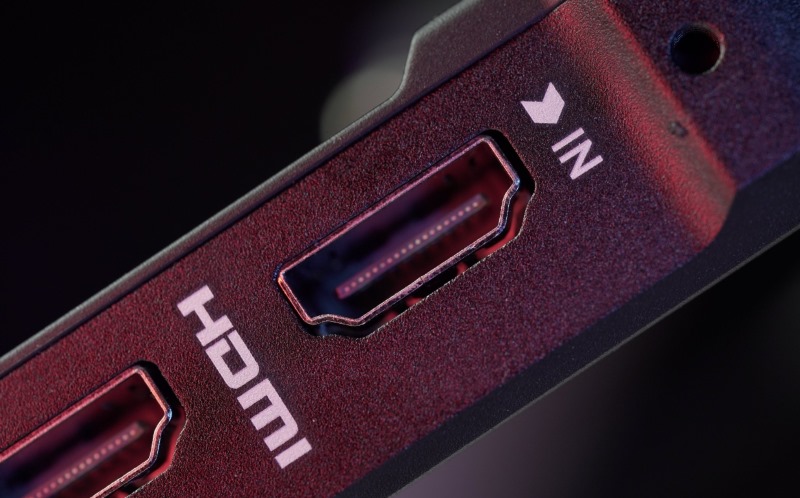When it comes to gaming monitors, choosing the right connection interface can significantly impact your gaming experience. DVI (Digital Visual Interface) and HDMI (High-Definition Multimedia Interface) are two of the most common options, each with distinct features and advantages. This guide will explore their differences, selling points, user pain points, application scenarios, and how each can enhance your gaming setup.

Key Selling Points of DVI and HDMI
DVI:
- High Refresh Rates: Supports refresh rates up to 144Hz at 1080p, making it a reliable choice for competitive gaming.
- Stable Signal Transmission: Designed for minimal interference, ensuring a stable connection ideal for high-performance gaming.
- Budget-Friendly Option: Typically more affordable than HDMI cables, appealing to cost-conscious gamers.
HDMI:
- Versatile Compatibility: Found in a wide range of devices, including gaming monitors, consoles, and televisions.
- Higher Resolutions and Audio Support: Supports resolutions up to 4K and integrates audio, eliminating the need for separate audio cables.
- Advanced Features: HDMI 2.1 provides features like Variable Refresh Rate (VRR) and Auto Low Latency Mode (ALLM) for a seamless gaming experience.
Addressing User Pain Points
- Refresh Rate Limitations: Gamers seeking ultra-high refresh rates may find HDMI versions below 2.0 limiting.
- Compatibility Issues: Older monitors may lack HDMI ports, making DVI a necessary fallback.
- Cable Clutter: DVI requires separate audio cables, increasing setup complexity compared to HDMI.
- Signal Quality Over Distance: HDMI cables may experience signal degradation over longer distances compared to DVI.
- Future-Proofing: Some gamers struggle to determine which interface offers better longevity and scalability for newer technologies.
Applications of DVI and HDMI in Gaming Monitors
DVI:
- Competitive Esports: For gamers focused on refresh rates and response times, DVI provides reliable performance at 1080p resolutions.
- Legacy Systems: Ideal for older gaming setups that lack HDMI support.
- Dual-Monitor Setups: Commonly used in multi-monitor configurations for productivity and gaming.
HDMI:
- High-Resolution Gaming: Perfect for immersive 4K gaming on newer monitors.
- Console Gaming: Essential for connecting modern consoles like the PS5 and Xbox Series X.
- Home Entertainment: Supports both gaming and media consumption with integrated audio and video.
Advantages of DVI and HDMI
DVI Advantages:
- Cost-Effective: Affordable solution for gamers prioritizing performance over advanced features.
- No Compression: Ensures uncompressed video transmission, maintaining image clarity.
- Legacy Support: Widely compatible with older monitors and GPUs.
HDMI Advantages:
- Multi-Device Connectivity: Versatile across gaming monitors, consoles, and TVs.
- Future-Proofing: HDMI 2.1 supports cutting-edge features like 120Hz at 4K, ideal for modern gaming.
- All-in-One Solution: Combines audio and video in a single cable, simplifying setup.
Design Features of DVI and HDMI
DVI:
- Pin Configurations: Available in single-link and dual-link variants for varying performance needs.
- Sturdy Build: Durable connectors ensure long-term reliability.
- No Audio Support: Focuses solely on video transmission, catering to specific gaming setups.
HDMI:
- Compact Design: Sleek connectors save space and simplify installation.
- Backward Compatibility: Supports earlier HDMI versions for universal usability.
- Enhanced Bandwidth: HDMI 2.1 offers up to 48Gbps, supporting high-performance gaming.
Which Delivers Superior Image Quality?
For Competitive Gaming:
DVI is a strong contender for gamers focused on refresh rates, especially at 1080p. Its ability to support 144Hz with minimal latency ensures smooth gameplay in esports scenarios.
For Immersive Gaming:
HDMI excels in delivering superior image quality for modern, high-resolution gaming. With support for 4K, HDR, and integrated audio, HDMI offers a more comprehensive experience, especially on advanced monitors and TVs.
Value and Future Considerations
DVI:
- Best For: Gamers with a focus on performance over features.
- Value: Cost-effective but limited in scalability for future high-resolution gaming.
HDMI:
- Best For: Gamers seeking a complete multimedia experience.
- Value: Offers excellent versatility, advanced features, and future-proofing for evolving technologies.
Conclusion
The choice between DVI and HDMI ultimately depends on your gaming priorities and hardware setup. DVI remains a reliable option for budget-conscious gamers focused on high refresh rates, while HDMI offers unparalleled versatility, advanced features, and superior image quality for immersive gaming experiences. Investing in the right interface ensures your gaming monitor delivers optimal performance and keeps pace with your gaming ambitions.





